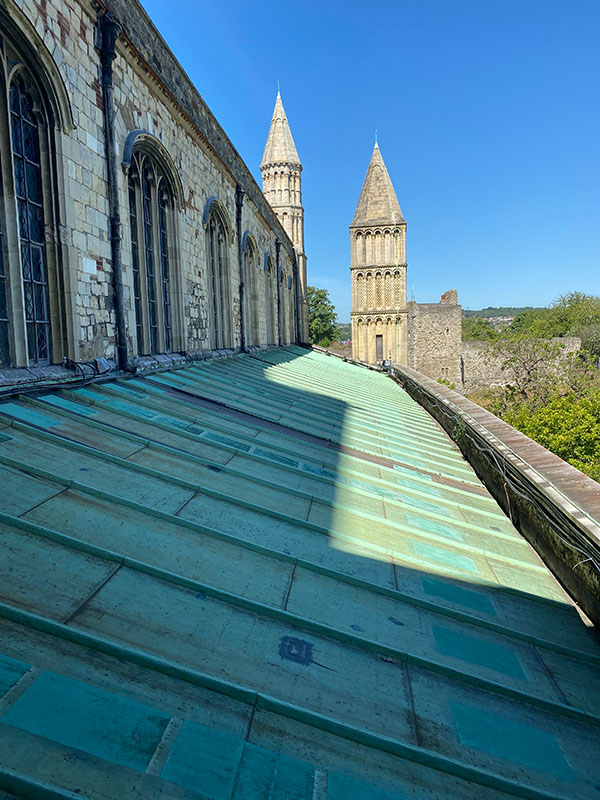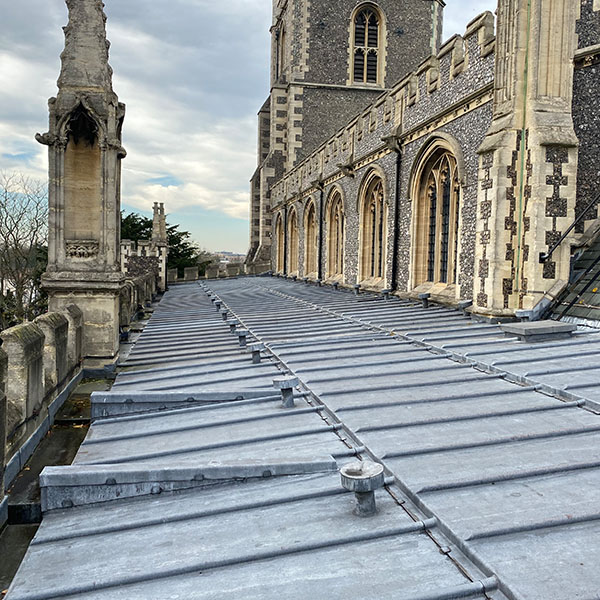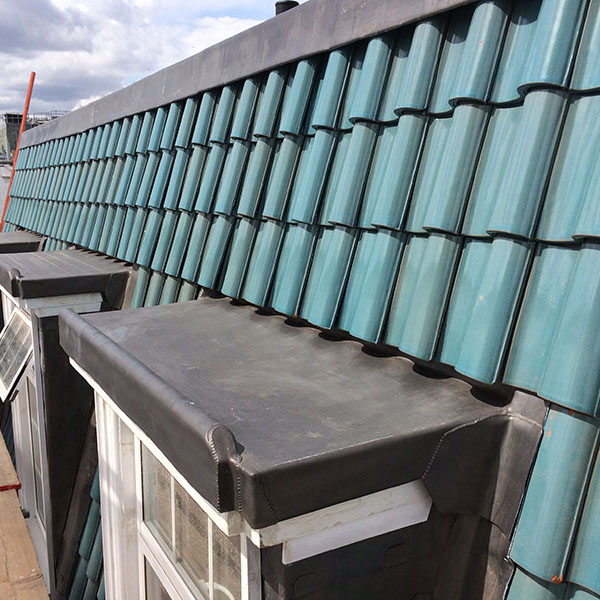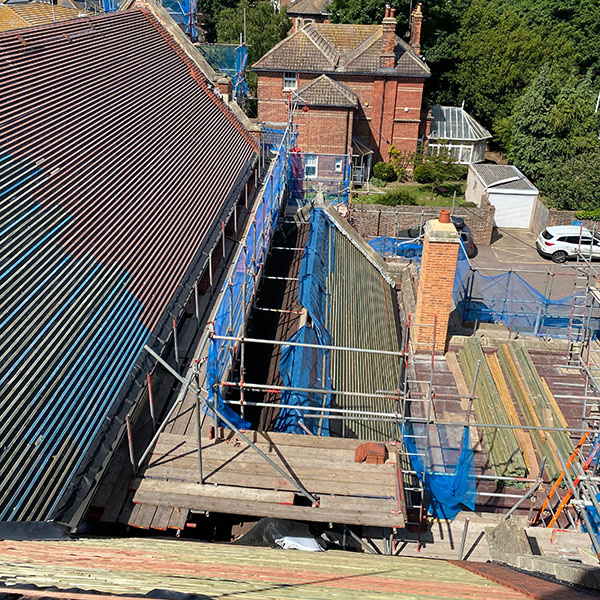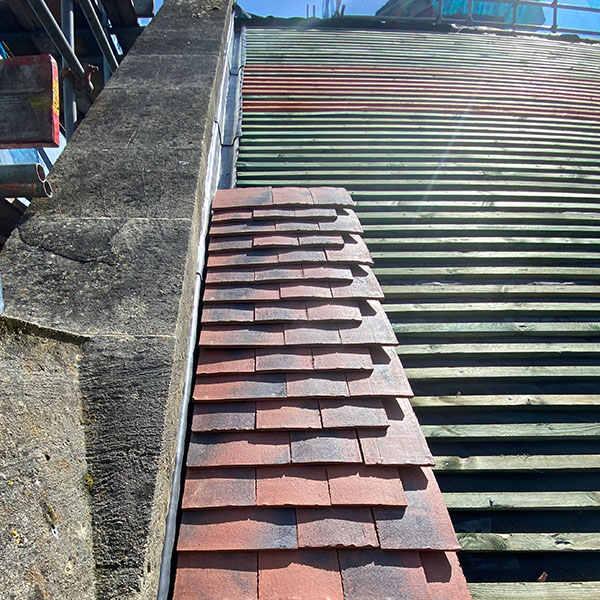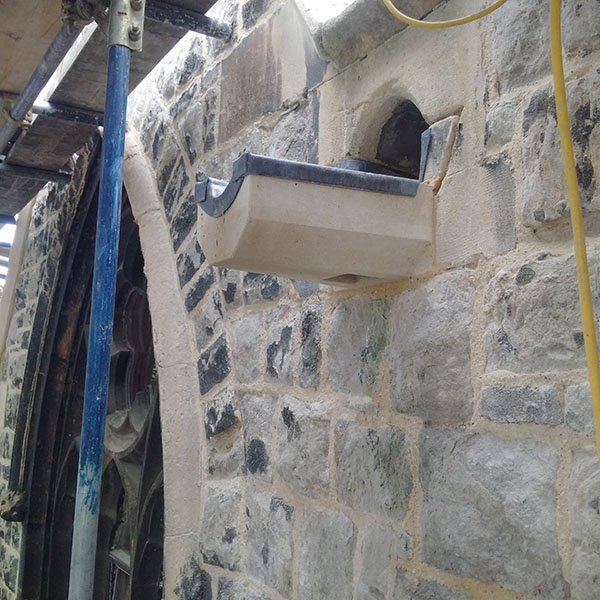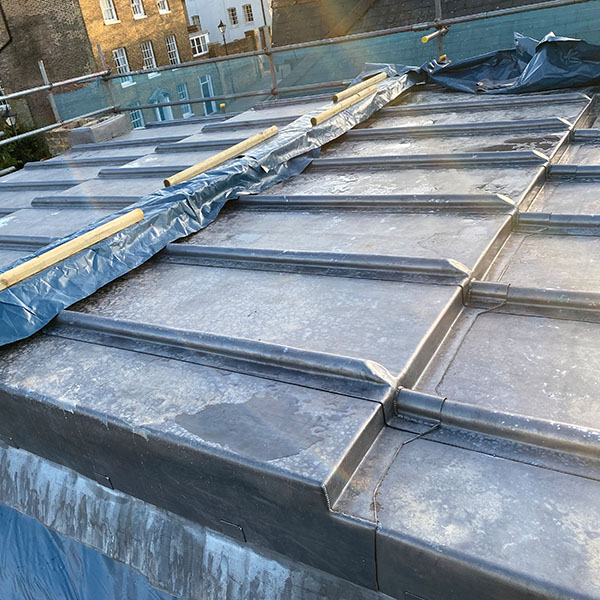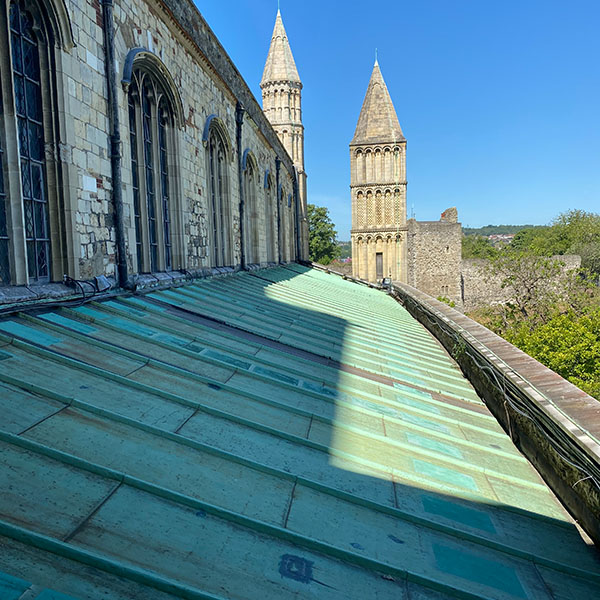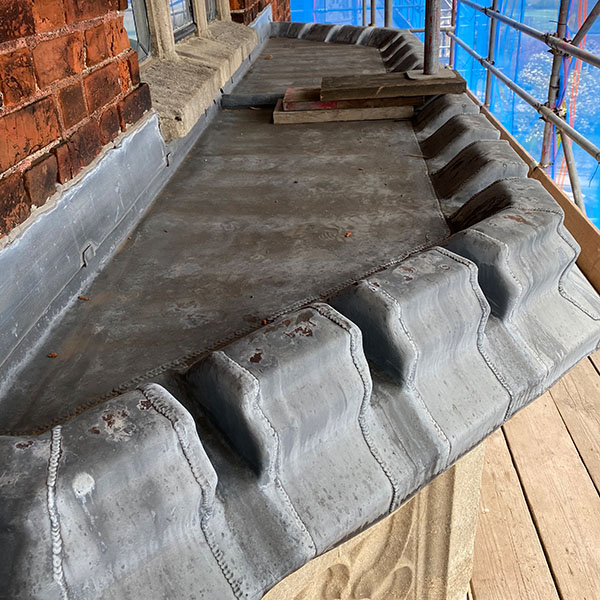Leadwork and Roofing
Lead has been in use since Roman times, when lead casting techniques were used to construct water pipes in various lengths and diameters. There are over 16,000 churches in England including cathedrals, chapels and ecclesiastical buildings, the majority of which have some form of lead work, from decorative rainwater heads, downpipes or large areas of plain lead sheet covering church spires.
Lead’s main features are durability and the ease with which it can be melted, cast, jointed and decorated for a variety of architectural uses. Much of our historic lead work has been lost through theft and poor repair work has affected the surviving stock. Every effort must be made to conserve what remains.
On over half the projects undertaken by Stone Edge Conservation, we are asked to complete the architectural lead work, ranging from simple abutment flashings to rain water heads; from downpipes and water cisterns to roof embellishments and even statuary decorative elements.
Roofs are an important feature of old buildings both historically and aesthetically. The roof structure is usually one of the methods used to date an early timber framed building. The roof is also the first line of defence against water penetration.
When it comes to roof repair and replacement Stone Edge Conservation use the five basic maxims of building conservation. ‘Conserve as found’ with ‘minimum intervention’, ‘like for like repairs’, ‘repairs should be reversible’ and should be ’sympathetic’. These philosophies must be tempered with responsibility for the safety and structural integrity of historic buildings and for the safety of the building users.
Stone Edge Conservation will help you find the correct approach for conservation based solutions to all your roof structure defects within a historic building.
